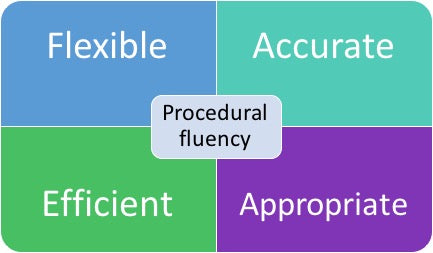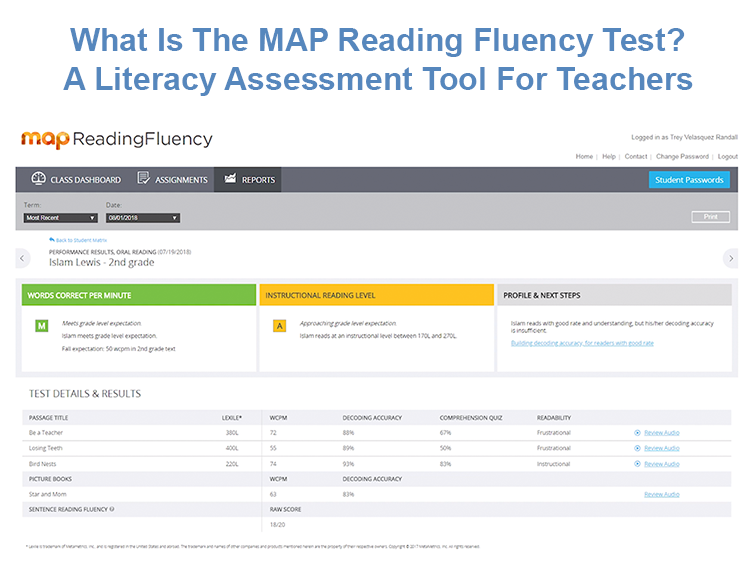Fluency is the developmental process that connects decoding with everything we know about words to make the meaning of the text come to life. Fluency is a wonderful bridge to comprehension and to a life-long love of reading. Jun 11, 2019 Assessing Fluency. Of course, assessment is a key piece of both determining students’ fluency needs and tracking progress. Bookmark these resources: 1. Try timed readings. A traditional approach for assessing fluency is a timed reading to obtain a words correct per minute rate (WCPM). Fluency is defined as the ability to read with speed, accuracy, and proper expression. In order to understand what they read, children must be able to read fluently whether they are reading aloud or silently. When reading aloud, fluent readers read in phrases and add intonation appropriately. Their reading is smooth and has expression. Children who do not read with fluency sound choppy.
Also found in: Dictionary, Medical, Wikipedia.


Fluency is the developmental process that connects decoding with everything we know about words to make the meaning of the text come to life. Fluency is a wonderful bridge to comprehension and to a life-long love of reading.
- noun
Synonyms for fluency
ability to speak or write
Synonyms
- ability to speak or write
- good command
ease
Synonyms
Synonyms for fluency
ready skill in expression
Synonyms for fluency
powerful and effective language
Related Words
skillfulness in speaking or writing
Antonyms
the quality of being facile in speech and writing
Related Words
Want to thank TFD for its existence? Tell a friend about us, add a link to this page, or visit the webmaster's page for free fun content.
Link to this page:
What are dmg files. On this page:
About Stuttering
We all have times when we do not speak smoothly. We may add 'uh' or 'you know' to what we say. Or, we may say a sound or word more than once. These are called disfluencies.
Fluency Definition

People who stutter may have more disfluencies and different types of disfluencies. They may repeat parts of words (repetitions), stretch a sound out for a long time (prolongations), or have a hard time getting a word out (blocks).
Stuttering is more than just disfluencies. Stuttering also may include tension and negative feelings about talking. It may get in the way of how you talk to others. You may want to hide your stuttering. So, you may avoid certain words or situations. For example, you may not want to talk on the phone if that makes you stutter more.
Stuttering can change from day to day. You may have times when you are fluent and times when you stutter more. Stress or excitement can lead to more stuttering.
Signs and Symptoms of Stuttering
The following typical disfluencies happen to many of us and are not stuttering:
- Adding a sound or word, called an interjection – 'I um need to go home.'
- Repeating whole words – 'Well well, I don’t agree with you.'
- Repeating phrases – 'He is–he is 4 years old.'
- Changing the words in a sentence, called revision – 'I had–I lost my tooth.'
- Not finishing a thought – 'His name is . . . I can't remember.'
When children are learning a lot of words or new speech sounds, you may notice some of these typical disfluencies. This is normal.
The following types of disfluencies happen when someone stutters:
- Part-word repetitions – 'I w-w-w-want a drink.'
- One-syllable word repetitions – 'Go-go-go away.'
- Prolonged sounds – 'Ssssssssam is nice.'
- Blocks or stops – 'I want a (pause) cookie.'
You may also notice other behaviors like head nodding or eye blinking. Sometimes people who stutter use these behaviors to stop or keep from stuttering. They may also avoid using certain words or use different words to keep from stuttering.
Feelings and attitudes can affect stuttering. For example, frustration or tension can cause more disfluencies. Being excited or feeling rushed can also increase disfluencies. A person who stutters may also stutter more if others tease them or bring attention to their speech. Stuttering may cause a person to be embarrassed and make them feel nervous about talking.
Causes of Stuttering
Stuttering usually starts between 2 and 6 years of age. Many children go through normal periods of disfluency lasting less than 6 months. Stuttering lasting longer than this may need treatment.
There is no one cause of stuttering. Possible causes include the following:
- Family history. Many people who stutter have a family member who also stutters.
- Brain differences. People who stutter may have small differences in the way their brain works during speech.
You cannot always know which children will continue to stutter, but the following factors may place them at risk:
- Gender. Boys are more likely to continue stuttering than girls. Data are currently limited to individuals who identify as male or female.
- Age when stuttering began. Children who start stuttering at age 3½ or later are more likely to continue stuttering.
- Family recovery patterns. Children with family members who continued to stutter are also more likely to continue.

Seeing A Professional
If you think your child stutters, get help from an SLP as early as possible. Early help can reduce the chances that your child will keep stuttering. Contact an SLP if any of the following things happen:
- Your child's stuttering has lasted for 6–12 months or more.
- Your child starts to stutter late (after 3½ years old).
- Your child starts to stutter more often.
- Your child tenses up or struggles when talking.
- Your child avoids talking or says it is too hard to talk.
- There is a family history of stuttering.
Testing For Stuttering
It's not easy to tell if your child stutters. Stuttering is more than disfluencies, so it is important to see an SLP for testing. The SLP will look at the following things:
- The types of disfluencies (typical and stutter-like).
- The number of disfluencies that are the stuttering type.
- How your child reacts when they stutter – do they get upset?
- How your child tries to 'fix' their speech – do they start over or stop talking?
The SLP will ask if your child’s stuttering affects the way they play with others, or if stuttering makes it harder for them to participate in school. The SLP will use all of this information to decide if your child stutters or not.
The SLP will also test your child's speech and language. This includes how your child says sounds and words, how well they understand what others say, and how well they use words to talk about their thoughts.
Treatment For Stuttering
There are different ways to help with stuttering. A treatment team usually includes you, your child, other family members, and your child's teacher. Treatment will depend one or more of the following:
- How much your child stutters
- How your child reacts when stuttering
- How stuttering impacts your child's everyday life
- How others react to your child when they stutter
- Your child's age
Fluency And Fitness
Treatment For Preschool Children Who Stutter
For preschool children, treatment may include the use of direct or indirect strategies.
- Direct strategies help your child change how they speak.
- Indirect strategies are ways to help make it easier for your child to talk. These strategies can include slowing down your own speech and asking fewer questions.
You are an important part of your child's treatment. The SLP can help you learn more about how to respond when your child stutters and what to do to improve how your child feels about talking.
Treatment For Older Children and Adults Who Stutter
For older children and adults, treatment focuses on managing stuttering. An SLP will help them feel less tense and speak more freely in school, at work, and in different social settings. The SLP will also help the person face speaking situations that make them fearful or anxious. This might include speaking on the phone or ordering food at a restaurant.
Some adults who started stuttering as a child may want to see an SLP every once in a while. The SLP will talk to the person about how stuttering affects their everyday life and can help the person practice ways to manage stuttering.
Children and adults who stutter may want to look into local support groups, where they can talk with others who stutter and learn about other helpful resources.
See ASHA information for professionals on the Practice Portal's Fluency Disorders page.
Other Resources
Free Reading Fluency Activities
This list does not include every website on this topic. ASHA does not endorse the information on these sites.
